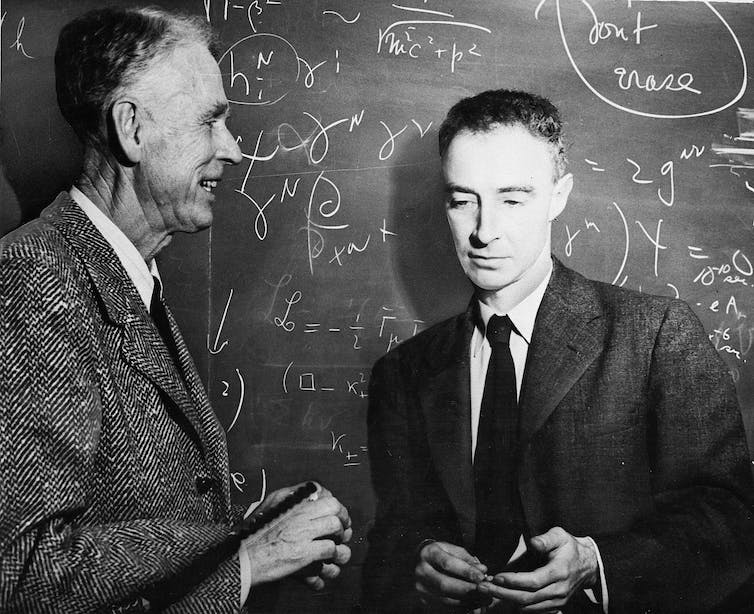The release of the film “Oppenheimer,” in July 2023, has renewed interest in the enigmatic scientist J. Robert Oppenheimer’s life. While Oppenheimer will always be recognized as the father of the atomic bomb, his early contributions to quantum mechanics form the bedrock of modern quantum chemistry. His work still informs how scientists think about the structure of molecules today.
Early on in the film, preeminent scientific figures of the time, including Nobel laureates Werner Heisenberg and Ernest Lawrence, compliment the young Oppenheimer on his groundbreaking work on molecules. As a physical chemist, Oppenheimer’s work on molecular quantum mechanics plays a major role in both my teaching and my research.
The Born-Oppenheimer approximation
In 1927, Oppenheimer published a paper called “On the Quantum Theory of Molecules” with his research adviser Max Born. This paper outlined what is commonly referred to as the Born-Oppenheimer approximation. While the name credits both Oppenheimer and his adviser, most historians recognize that the theory is mostly Oppenheimer’s work.

J. Robert Oppenheimer, on the right, in 1947, speaking to mathematician Oswald Veblen at the Princeton Institute for Advance Study.
AP/Anonymous
The Born-Oppenheimer approximation offers a way to simplify the complex problem of describing molecules at the atomic level.
Imagine you want to calculate the optimum molecular structure, chemical bonding patterns and physical properties of a molecule using quantum mechanics. You would start by defining the position and motion of all the atomic nuclei and electrons and calculating the important charge attractions and repulsions occurring between these particles in the molecule.
Calculating the properties of molecules gets even more complicated at the quantum level, where particles have wavelike properties and scientists can’t pinpoint their exact position. Instead, particles like electrons must be described by a wave function. A wave function describes the electron’s probability of being in a certain region of space. Determining this wave function and the corresponding energies of the molecule is what is known as solving the molecular Schrödinger equation.
Solving the Schrödinger equation lets scientists calculate the properties of a molecule.
Unfortunately, this equation cannot be solved exactly for even the simplest possible molecule, H₂⁺, which consists of three particles: two hydrogen nuclei (or protons) and one electron.
Oppenheimer’s approach provided a means to obtain an approximate solution. He observed that atomic nuclei are significantly heavier than electrons, with a single proton being nearly 2,000 times more massive than an electron. This means nuclei move much slower than electrons, so scientists can think of them as stationary objects while solving the Schrödinger…



